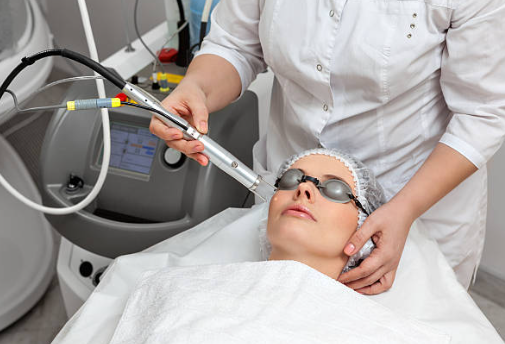

Aesthetic medicine


In the modern age, the health and beauty industries are thriving, with countless products promising to improve our well-being and enhance our appearance. However, beneath the surface lies a complex web of interests that can significantly impact the products we use and the choices we make. The influence of big pharmaceutical companies, often referred to as “Big Pharma,” on the health and beauty sectors is a topic that demands our attention. In this blog, we’ll explore the multifaceted relationship between Big Pharma and these industries, uncover potential conflicts of interest, and discuss how consumers can navigate this landscape to make informed choices.
The intricate relationship between health, beauty, and the pharmaceutical industry, often referred to as “Big Pharma,” is a multifaceted and evolving landscape that has far-reaching implications for consumers, practitioners, and the industries themselves. This convergence brings together scientific advancements, marketing strategies, and consumer desires in a way that influences not only product development but also societal perceptions of well-being and aesthetics.
Historically, the pharmaceutical industry’s primary focus has been on developing drugs and therapies to treat medical conditions and improve health outcomes. However, the pursuit of profits has driven pharmaceutical companies to explore new avenues, including the beauty industry. This shift has led to the development of cosmeceuticals, aesthetic procedures, and beauty products that claim to offer both cosmetic and pharmaceutical benefits.
Cosmeceuticals represent a marriage of cosmetics and pharmaceuticals, blending the art of beauty enhancement with the science of skincare. Unlike traditional cosmetics, which focus primarily on aesthetics, cosmeceuticals go beyond surface-level improvements. These products contain active ingredients with proven biological effects on the skin, offering therapeutic benefits that align with medical research and knowledge.
Central to the concept of cosmeceuticals is the integration of scientifically validated ingredients. These ingredients, often derived from botanical extracts, vitamins, peptides, antioxidants, and other bioactive compounds, have been rigorously studied for their positive effects on the skin. By harnessing the power of these compounds, cosmeceuticals aim to address a wide range of skincare concerns, including fine lines, wrinkles, hyperpigmentation, acne, and uneven texture.
Aesthetic medicine, also known as cosmetic or plastic surgery, has evolved significantly over the years. What was once primarily associated with surgical procedures has expanded to include minimally invasive treatments that offer remarkable results with less downtime. This shift has been fueled by advancements in medical science and the development of pharmaceutical products that cater to the demands of individuals seeking aesthetic improvements.
Botox, a brand name for a neurotoxin derived from the bacterium Clostridium botulinum, is one of the most well-known pharmaceutical agents used in aesthetic procedures. It’s injected into muscles to temporarily paralyze them, reducing the appearance of wrinkles and lines caused by muscle contractions. Dermal fillers, another class of pharmaceutical products, contain substances like hyaluronic acid or collagen that are injected to restore volume and plumpness to the skin, addressing issues like sagging and hollow areas.
The utilization of pharmaceuticals in aesthetic procedures demonstrates a deep understanding of human anatomy, physiology, and the aging process. These procedures involve intricate knowledge of facial muscles, tissue dynamics, and the intricate interplay between these factors. Medical professionals skilled in aesthetics use this knowledge to strategically administer pharmaceutical products for natural-looking results that enhance a person’s features rather than dramatically altering them.
Marketing campaigns often employ aspirational narratives, creating an idealized version of beauty that resonates with consumers’ desires for self-improvement and transformation. These narratives can be persuasive, promising that a particular product or treatment will help individuals achieve the flawless skin, youthful appearance, or body proportions they aspire to. Such narratives tap into deeply rooted human desires for acceptance, confidence, and societal validation.
Visual imagery is a cornerstone of beauty marketing, as it allows brands to communicate their desired messages and ideals directly to consumers. Through carefully curated images, advertisements showcase models and influencers who epitomize beauty standards of the moment. These images often undergo retouching and editing, creating an unrealistic portrayal of beauty that can influence consumer perceptions of what is attainable.
Social media platforms amplify the impact of marketing strategies on consumer perception. The rapid dissemination of images and messages via platforms like Instagram, TikTok, and YouTube can perpetuate trends and standards of beauty. The rise of filters, photo-editing apps, and “beauty modes” further blurs the line between reality and digitally enhanced aesthetics, contributing to an environment where individuals might feel pressured to meet these digitally altered ideals.
Influencer marketing has emerged as a powerful tool in the beauty industry. Influencers, who often have large followings on social media, collaborate with brands to promote products and treatments. While influencers can provide more relatable representations of beauty compared to traditional models, they also contribute to setting trends and ideals. The transparency of influencer relationships with brands can vary, requiring consumers to exercise critical thinking when evaluating recommendations.
Ethical considerations within beauty marketing entail a delicate balance between profit-seeking and upholding the ethical standards that safeguard consumer well-being. The pursuit of financial gain can sometimes lead to the promotion of products that prioritize sales over genuine benefits. Brands must navigate this tension by prioritizing the delivery of accurate and transparent information to consumers, allowing them to make informed decisions.
One of the ethical pitfalls in beauty marketing is the use of false advertising and misleading claims. When brands exaggerate the benefits of their products beyond their actual capabilities, they manipulate consumer expectations and erode trust. Ethical marketers prioritize honest communication, providing clear information about what a product can and cannot achieve. This transparency fosters a healthier consumer-brand relationship.
Beauty marketing often contributes to the perpetuation of unrealistic beauty standards. The relentless portrayal of airbrushed images and digitally enhanced models can foster body image issues and self-esteem struggles among consumers. Ethical brands recognize the impact of their visuals and messaging, opting for diverse and authentic representation that resonates with a broader range of consumers.
Transparency in beauty marketing extends to informing consumers about potential risks, side effects, and outcomes associated with products and procedures. Providing accurate information empowers consumers to give informed consent when making choices about their appearance. Ethical brands prioritize consumer education, offering resources that help individuals understand the implications of their decisions.
Innovation is the lifeblood of the beauty industry, fueling breakthroughs in skincare formulations, aesthetic procedures, and product delivery methods. Technological advancements allow brands to offer more effective solutions for consumers’ skincare concerns, from anti-aging products to cutting-edge laser treatments. However, innovation comes with the responsibility to thoroughly assess new techniques and ingredients before they reach the market.
The rapid pace of beauty innovation necessitates vigilant oversight to prevent the introduction of untested or inadequately evaluated products and procedures. Regulatory bodies and industry organizations play a critical role in ensuring that advancements meet safety standards before they are made available to consumers. Balancing the desire to offer novel solutions with the need for rigorous evaluation is essential to safeguarding consumer well-being.
In the pursuit of innovative products and procedures, clinical testing and evidence-based practices are foundational. Ethical brands prioritize rigorous testing to establish the safety and efficacy of their offerings. Rigorous clinical trials and studies provide scientific validation, enabling consumers to make informed decisions about the potential benefits and risks associated with a product or procedure.
While innovation can yield immediate results, considering the long-term effects is crucial. Some beauty products and procedures may have immediate benefits but pose potential risks or side effects over time. Ethical brands engage in comprehensive research to anticipate and understand any long-term implications, allowing them to provide transparent information to consumers.
Balancing innovation and safety involves transparently communicating potential risks associated with new products or procedures. Ethical brands provide clear information to consumers about possible side effects, contraindications, and expected outcomes. This empowers consumers to make well-informed choices based on a comprehensive understanding of both the benefits and risks.
Innovative aesthetic procedures often require specialized training for practitioners to ensure safe and effective application. Responsible brands prioritize training programs that emphasize proper technique, patient assessment, and post-procedure care. By equipping practitioners with the necessary knowledge, ethical brands reduce the likelihood of complications and adverse outcomes.
Empowering informed choices begins with providing consumers access to accurate and trustworthy information. Ethical brands offer comprehensive product details, ingredient lists, and information about procedures on their websites, packaging, and marketing materials. This transparency enables consumers to understand what they’re purchasing and make decisions based on credible information.
Beauty brands that prioritize consumer empowerment often offer educational resources that help individuals navigate the complexities of the beauty landscape. These resources may include articles, videos, webinars, and FAQs that explain product benefits, usage instructions, potential side effects, and proper application techniques. Educated consumers are better equipped to make choices that align with their goals and values.
The ingredients used in beauty products play a significant role in their efficacy and safety. Ethical brands provide information about key ingredients, their functions, and their potential benefits for specific skin concerns. Transparent ingredient disclosure empowers consumers to evaluate products based on their personal preferences and sensitivities.
Empowerment hinges on clear and realistic product claims. Ethical brands avoid sensationalism and exaggerated promises in their marketing. Instead, they focus on communicating genuine benefits while acknowledging the limitations of their products. This approach helps consumers set realistic expectations and fosters trust between the brand and its audience.
User-generated content, such as consumer reviews and testimonials, can offer valuable insights into the effectiveness and user experience of beauty products and procedures. Ethical brands encourage open feedback and share authentic testimonials from a diverse range of customers. This transparency helps prospective buyers gain real-world perspectives and make more informed decisions.
Sustainable Shades For many DIY enthusiasts and design aficionados, a fresh coat of paint is…
Cruelty-Free Solutions for a Healthier You Chronic inflammation can be a relentless foe, disrupting our…
Unleashing Your Brain's Potential In today's fast-paced world, maintaining sharp mental focus and cognitive agility…
Exploring DIY Organic Makeup Fixers For the eco-conscious beauty enthusiast, the quest for flawless makeup…
A Sensitive Exploration The clean beauty movement has taken the beauty world by storm. Consumers…
Taming the Mane Frizz – the bane of smooth hair dreams. It can transform a…
This website uses cookies.